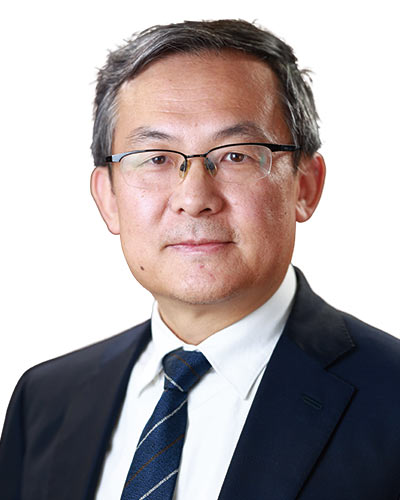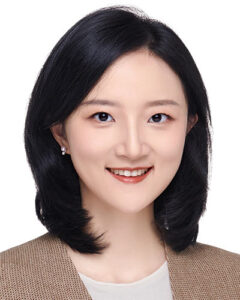In the determination of copyright infringement, concepts such as ‘access’ and ‘substantive similarity’, introduced in relevant US laws, often prove valuable to courts in China
On 18 March 2021, the Beijing Intellectual Property Court held its second-instance hearing of the “Hello, Mr Billionaire” copyright infringement case. More than 13 million netizens watched the live-streamed hearing. On 29 September 2021, the court announced its ruling, which upheld the first-instance judgment and found that there was no infringement. The case attracted wide attention and prompted further discussion on copyright infringement tests.

Managing partner
GoldenGate Lawyers
Tel: +86 10 8589 6931
Email: tmeng@goldengatelawyers.com
US law has developed comprehensive and fine-grained aspects of copyright infringement inquiry, offering a systematic approach with multi-pronged tests addressing copyright infringement. Such international experience has proved to be valuable for PRC courts on many occasions.
Layer 1: The plaintiff’s work enjoys valid copyright. When dealing with copyright infringement, we should first look at the plaintiff’s work to see if it is copyrightable, or at least filter out those non-copyrightable elements. Regarding the scope of copyright protection, China also follows the internationally accepted rule of “idea-expression dichotomy”. As such, it is common ground that ideas are not protectable. Meanwhile, according to article 2 of China’s Regulations for the Implementation of Copyright Law, “novelty” and “replicability” are required to establish copyrightable “expression”.
However, in real life, the line between idea and expression is blurry and elusive. On the spectrum from the entirely non-copyrightable idea to fully copyrightable expression, the exact point where idea rises to expression is often difficult to locate.
According to US case law, the plaintiff’s work should be sufficiently concrete for it to reflect its novelty and to qualify for protection (Art Buchwald et al v Paramount Pictures etc., et al, 1990). Correspondingly, in the case of Xu Haojie v Monarch (2014), the Chengdu Intermediate People’s Court noted: “An idea rises to the level of expression when such expression of an idea is sufficiently concrete to the point that an ordinary author, without any further work of novel nature, is able to achieve the same by following what is available
at hand.”
At the same time, the authors have noted that the generation or derivation of “expression” is no longer limited to traditional forms or media. For example, in the case of Chengdu Skymoons Technology and iQiyi v Suzhou Snail Digital Technology (2018), Jiangsu High People’s Court determined that the “specific layout of certain game rules” are qualified to be found copyrightable.

Attorney
GoldenGate Lawyers
Tel: +86 10 8589 0501
Email: sdong@goldengatelawyers.com
Layer 2: “Access and substantial similarity” standard and its development. First introduced under US case law, the “access and substantial similarity” standard has now become an essential rule for PRC courts in dealing with copyright infringement cases. However, as a response to developments in society and novel issues relating to copyright infringement, US courts have refined the “access and substantial similarity” standard, and the authors observe the following recent developments:
(1) Access. To claim access, the plaintiff is generally required to prove that the defendant had an opportunity to view or copy the work of the plaintiff. Alternatively, access is proven if the plaintiff’s work has been widely dissembled (Three Boys Music Corp v Bolton [2000]).
(2) Substantial similarity. The “substantially similarity” standard has a history of more than 100 years in the US. In the 1970s, the Ninth Circuit first adopted an extrinsic/intrinsic test in Sid & Marty Krofft Television Productions v McDonald’s (1977), and refined the test in Shaw v Lindheim (1990).
The extrinsic test requires an objective comparison of the expression of the works, focusing on similarities between the plot, themes, dialogue, mood, setting, pace, characters and sequence of events. The substantial similarity test in a PRC court appears to lean towards the extrinsic test, and is often under the judge’s discretion.
However, substantive similarity comparison often requires insights from professionals. As such, US case law believes that compared with a lay observer’s intuition, expert testimony would be more reliable.
In contrast to the extrinsic test, the intrinsic test is a subjective test in the eye of an ordinary person (in many cases the intended audience), and requires a holistic comparison. The US courts have repeatedly stressed a dependence on a comparison of “the total concept and feel” of the works (Cavalier v Random House [2002]). Thus far, such a test has not been made available by a PRC court.
Test from another dimension: The inverse ratio rule. Under US law, the inverse ratio rule is also applicable as part of the access and substantial similarity inquiry. Under this rule, access and substantial similarity are inversely linked with each other. In other words, a lower standard of proof of access is required, or even no proof of access is required, when the works are strikingly similar, and a higher standard of proof of access is required when a low degree of similarity is shown (Smith v Jackson).
PRC courts are starting to fill the gaps in the inverse ratio rule. For example, in the above-mentioned “Hello, Mr Billionaire” infringement case, the Beijing Intellectual Property Court made the following remarks, which appeared to be a starting point for the adoption of the inverse ratio rule:
“In this case, the evidence has failed to show a high probability of access to the treatment by the appellee. Therefore, unless the similarity between the works is so striking that it is impossible to reasonably conclude that they were independently created, and that there must be a high degree of access accordingly, the copying claim shall not survive.”
Tim Meng is the managing partner at GoldenGate Lawyers. He can be contacted on +86 10 8589 6931 or by email at tmeng@goldengatelawyers.com
Dong Shi is an attorney at GoldenGate Lawyers. She can be contacted on +86 10 8589 0501 or by email at sdong@goldengatelawyers.com





















